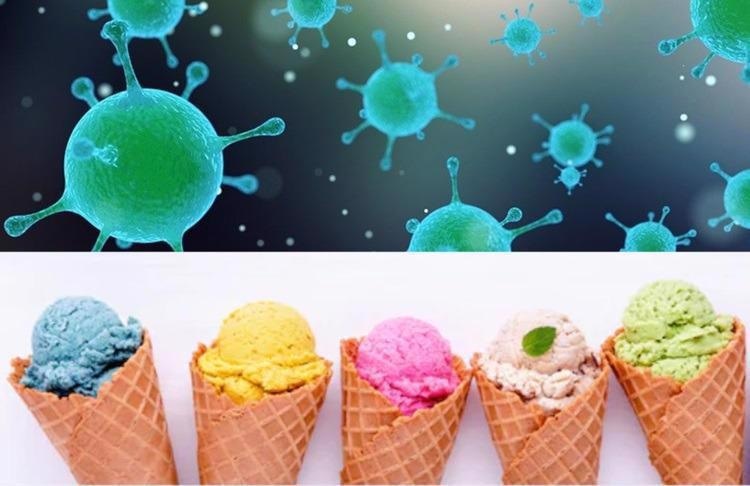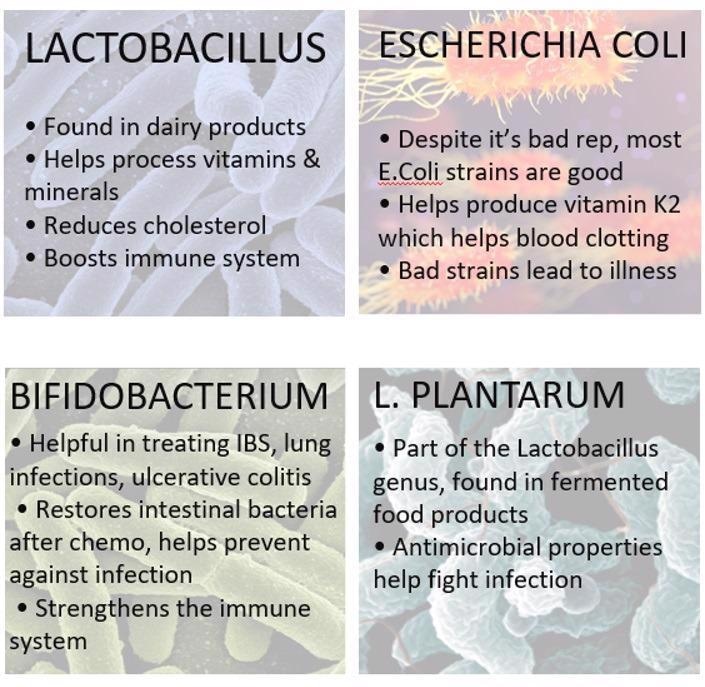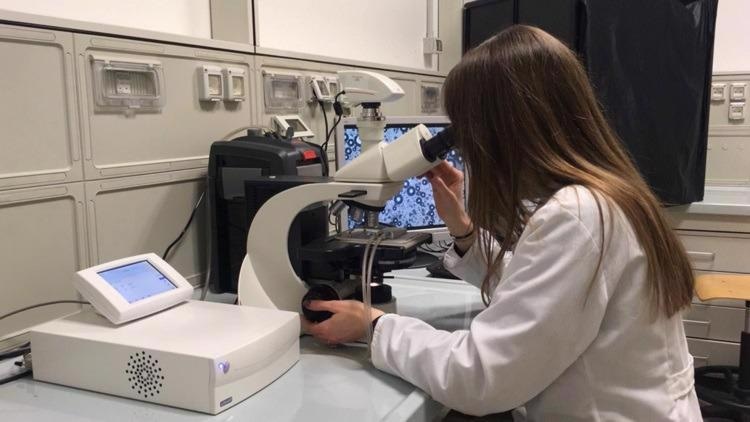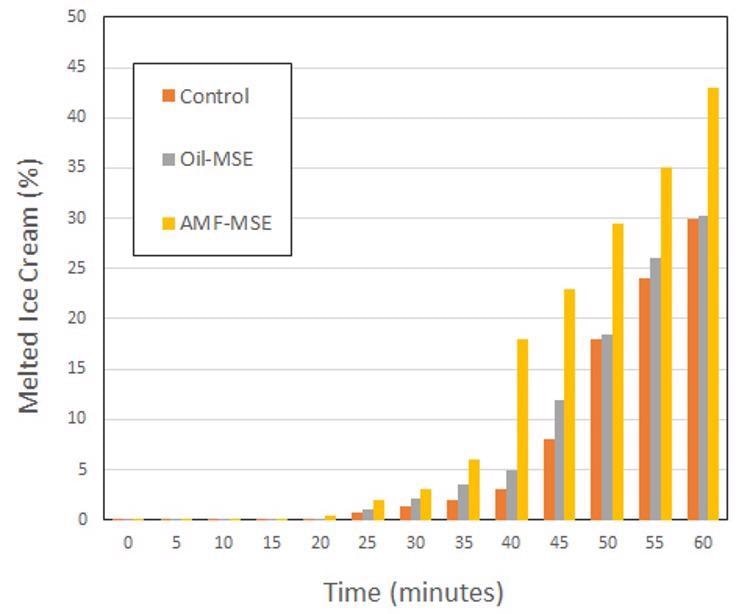A breakthrough in research has been made by an Italian research group with regards to advancing the possibility of adding good bacteria, known as probiotics, into low-fat ice cream.

The introduction of friendly bacteria into low-fat ice cream is a breakthrough in the search for healthy alternative comfort foods. Image Credit: Linkam Scientific Instruments
Probiotics are championed for their role in improving or maintaining digestive health, and consumer awareness of the potential health benefits has led to a significant increase in demand for probiotic-enriched food and beverages, particularly in dairy products.
One considerable challenge has been introducing these probiotics into low-fat and healthy foods. This article details how the research group at the University of Udine (Italy) has recently accomplished this.
Probiotics are living microorganisms, mostly bacteria, which are considered to typically provide beneficial effects to the human gastrointestinal system by delivering ‘friendly’ bacteria to the gut flora - some of the most frequently used probiotics, and their reported properties, are detailed in the figure below.
For these friendly bacteria to have an impact, an appropriate amount of live probiotic bacteria must reach the intestine. Probiotic bacteria are vulnerable to damage caused by food processing and storage, as well as during transit through the gastrointestinal tract.

Four types of probiotic bacteria, and some of their health-boosting properties. Image Credit: Linkam Scientific Instruments
Considerable research efforts relative to developing probiotic delivery systems with the capacity to protect the probiotics against the hazards they encounter during food production, handling, and consumption are well underway.
There is one delivery system attracting a significant amount of attention throughout the research community: Saturated monoglyceride structured emulsions (MSEs).
MSEs are emulsions made up of oil and water phases stabilized by saturated monoglyceride. In this case, probiotics have been introduced to the water phase of skimmed milk. The group from the University of Udine in Italy evaluated MSEs as a potential delivery system of probiotics in ice cream.
To start, they analyzed the microbial feasibility in the emulsions during storage at 4 °C. They discovered the inclusion of a probiotic Lactobacillus rhamnosus strain in MSEs led to high cell viability during storage at 4 °C for up to 2 months 1.

Students look at structured emulsions under the microscope using various Linkam stages in the lab at the University of Udine. Image Credit: Linkam Scientific Instruments
Researchers associated with the Department of Agricultural, Food, Animal and Environmental Sciences of the University of Udine (Italy), including Marinela Marino and Sonia Calligaris, were part of the research team that designed the study.
In our research group food technologists and food microbiologists merge their expertise to obtain functional foods containing probiotics at the microbial load considered able to confer beneficial effects to the host's health (at least 106–107 CFU/g). In this study we focused our attention on ice-cream that is a particularly challenging product. In fact, both the freezing process and the storage at very low temperatures are known to damage the cell structures leading to a reduction of microbial viability.
Marinela Marino and Sonia Calligaris, Department of Agricultural, Food, Animal and Environmental Sciences, University of Udine
In their pioneering paper published in LWT – Food Science and Technology 2, the group utilized a temperature-controlled stage Linkam CSS450 to evaluate the microstructure of ice-cream carrying MSE delivering probiotics.
The images were captured by positioning the ice cream between the parallel plates of the temperature-controlled stage, cooled at -7 °C. This is made possible by the precision heating and cooling capacity of the CSS, as well as quartz windows, which are transparent on the shear plates, facilitating optical observation.
The authors were able to witness the distribution of air bubbles into ice-cream made from various formulations with probiotics dispersed by MSEs. They were classified into three groups; those made with sunflower oil (Oil-MSE); Anhydrous Milk Fat (AMF-MSE), and a control batch without MSEs formulated with milk fat.
Air cells in each image were partitioned into another three classes, according to the maximum length of the longest line joining two points of the cell's outline and passing through the centroid (average size): class 1 was made up of air cells with 0–20 μm size, class 2 was air cells with 20–40 μm size, class 3 contained air cells above 40 μm size.
The percentage ratio between the number of air cells in each class and the overall number of air cells in the image was then calculated.

Meltdown dynamics of ice creams formulated with MSEs compared to the control sample. Image Credit: Linkam Scientific Instruments
Oil-MSE ice cream demonstrated the lowest number of air cells that were distributed uniformly. Comparatively, AMF-MSE ice cream showed the greatest number of air cells, but they were distributed in a non-uniform manner and tightly packed, leading to a structure similar to foam.
Finally, the control sample demonstrated air bubbles and distribution size for contrast between the ice cream prepared with MSE containing oil and that of anhydrous milk fat.
The researchers determined that the presence of crystalline monoglycerides in oil-MSE containing samples enabled potential partial fat coalescence throughout the whipping and freezing processes, resulting in air bubble stabilization which led to higher overrun (the amount of ice cream aerated successfully).
The stability of ice cream during meltdown is another quality parameter impacted by the lipid phase structure. The results of this test are displayed in the figure above. During this study, the control and the Oil-MSE ice creams demonstrated similar meltdown profiles, whereas the AMF-MSE sample had the lowest meltdown resistance.
Based on a survey of optical microscopic images, it is probable that the high overrun value, together with the tight distribution of air cells, may have hastened the melting rate of AMF-MSE ice cream. The optical microscope images can be viewed in the full article here.
The oil-MSE exhibited the capacity to generate a melt-resistant fat network structure in ice cream when milk fat was substituted for sunflower oil. It was concluded that a protective and structuring role was performed by the monoglyceride crystalline structures formed in the MSE.
The use of MSE containing sunflower oil enables the possibility to successfully protect probiotic bacteria, as well as formulating a low saturated fat ice cream – which could provide a boost in appeal towards health-conscious consumers.
References
- Marino, M., Innocente, N., Calligaris, S., Maifreni, M., Marangone, A., & Nicoli, M. C. (2017). Viability of probiotic Lactobacillus rhamnosus in structured emulsions containing saturated monoglycerides. Journal of Functional Foods, 35, 51–59.
- Calligaris, S, Marino, M, Maifreni, M, Innocente, N (2018), Potential application of monoglyceride structured emulsions as delivery systems of probiotic bacteria in reduced saturated fat ice cream, LWT – Food Science & Technology, 96, 329-334.

This information has been sourced, reviewed and adapted from materials provided by Linkam Scientific Instruments.
For more information on this source, please visit Linkam Scientific Instruments.